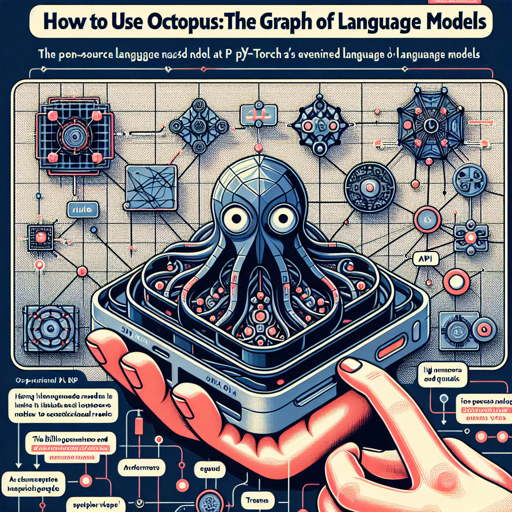Welcome to the world of Octopus V4, an advanced open-source language model that acts as the master node in Nexa AI’s envisioned graph of language models. In this article, we will explore how you can effectively implement Octopus V4, troubleshoot common issues, and maximize its capabilities.
What is Octopus V4?
Octopus V4 is a powerful language model, boasting 3 billion parameters, designed to accurately interpret and direct user queries to specialized models for processing. It is compact, making it suitable for mobile devices while ensuring high accuracy in query handling. It is particularly tailored for MMLU benchmark topics, assisting in converting natural language queries into professional formats.
Installing and Running Octopus V4
To run the Octopus V4 model on a GPU, you can follow these steps:
- Ensure you have PyTorch and Transformers installed.
- Use the following Python code to load the model and tokenizer:
import torch
from transformers import AutoModelForCausalLM, AutoTokenizer
import time
torch.random.manual_seed(0)
model = AutoModelForCausalLM.from_pretrained(
"NexaAIDev/Octopus-v4",
device_map="cuda:0",
torch_dtype=torch.bfloat16,
trust_remote_code=True
)
tokenizer = AutoTokenizer.from_pretrained("NexaAIDev/Octopus-v4")
question = "Tell me the result of derivative of x^3 when x is 2?"
inputs = f"<|system|>You are a router. Below is the query from the users, please call the correct function and generate the parameters to call the function.<|end|><|user|>{question}<|end|><|assistant|>"
print('\n============= Below is the response ==============\n')
# Consider using early stopping with token to accelerate
input_ids = tokenizer(inputs, return_tensors="pt")['input_ids'].to(model.device)
generated_token_ids = []
start = time.time()
# Set a large enough number here to avoid insufficient length
for i in range(200):
next_token = model(input_ids).logits[:, -1].argmax(-1)
generated_token_ids.append(next_token.item())
input_ids = torch.cat([input_ids, next_token.unsqueeze(1)], dim=-1)
# 32041 is the token id of
if next_token.item() == 32041:
break
print(tokenizer.decode(generated_token_ids))
end = time.time()
print(f'Elapsed time: {end - start:.2f}s') Understanding the Code with an Analogy
Imagine your computer as a chef in a busy restaurant, tasked with preparing a variety of dishes based on specific customer orders. In this analogy:
- Octopus V4 Model: Represents your chef’s unique style and knowledge of recipes.
- Query (Order): The specific dish (like the derivative of x3 at x=2) that customers (users) want to be prepared.
- Tokenizer: Acts as the chef’s assistant, converting verbal orders into structured formats that can be understood in the kitchen.
- Response: The final dish served to the customer, tailored perfectly to their request.
Troubleshooting Common Issues
Even the best chefs can experience challenges in their kitchens. Here are some common issues you may encounter while using Octopus V4 and ways to address them:
- Model Loading Errors: If you encounter errors when loading the model, ensure that your PyTorch and Transformers versions are compatible with the model specifications.
- Slow Performance: If the model runs slower than expected, consider adjusting the device_map parameter or the torch_dtype to optimize for your hardware.
- Query Misinterpretation: Ensure your input question is clear and formatted correctly to avoid miscommunication with the model.
For more insights, updates, or to collaborate on AI development projects, stay connected with fxis.ai.
Exploring Other Features
Octopus V4 integrates a variety of specialized models tailored to different domains such as Biology, Physics, and Business. To see the full list and experiment with domain-specific models, check out the Domain LLM Leaderboard.
Conclusion
In summary, Octopus V4 is a versatile and powerful tool that enhances the handling of language model queries. By understanding how to implement and troubleshoot this model, you can leverage its capabilities for your projects effectively.
At fxis.ai, we believe that such advancements are crucial for the future of AI, as they enable more comprehensive and effective solutions. Our team is continually exploring new methodologies to push the envelope in artificial intelligence, ensuring that our clients benefit from the latest technological innovations.

